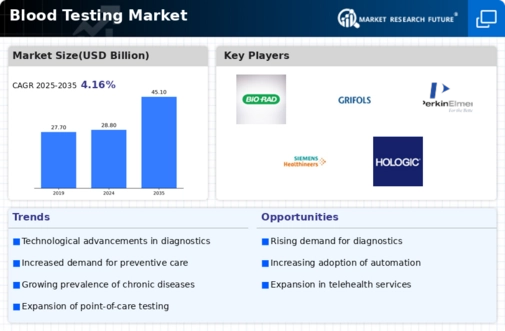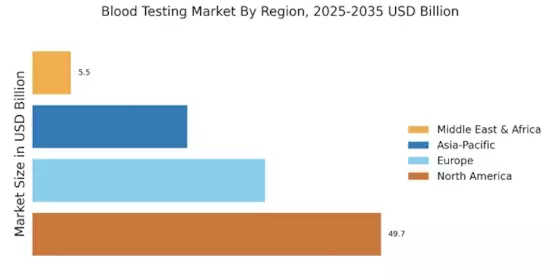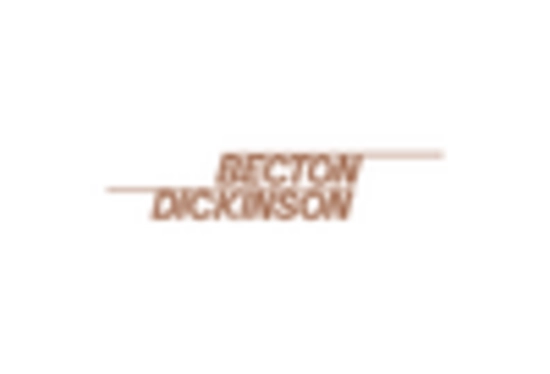Rising Awareness of Blood Disorders
The growing awareness of blood disorders, such as anemia and hemophilia, is driving the Blood Testing Market. Educational campaigns and advocacy efforts are informing the public about the importance of blood health and the need for regular testing. This heightened awareness is leading to an increase in the number of individuals seeking blood tests for diagnosis and monitoring. Furthermore, the prevalence of blood disorders is prompting healthcare providers to recommend routine screenings, thereby boosting the demand for blood testing services. As awareness continues to rise, the Blood Testing Market is likely to experience sustained growth, reflecting the increasing focus on blood health.
Rising Prevalence of Chronic Diseases
The increasing incidence of chronic diseases such as diabetes, cardiovascular disorders, and cancer is a primary driver of the Blood Testing Market. As these conditions require regular monitoring and management, the demand for blood tests has surged. According to recent data, approximately 422 million people worldwide are living with diabetes, necessitating frequent blood glucose testing. This trend is likely to continue, as healthcare providers emphasize early detection and management of chronic diseases. Consequently, the Blood Testing Market is expected to expand significantly, driven by the need for reliable diagnostic tools that facilitate timely interventions and improve patient outcomes.
Growing Demand for Preventive Healthcare
The shift towards preventive healthcare is significantly influencing the Blood Testing Market. As individuals become more health-conscious, there is a rising demand for routine blood tests to monitor health status and detect potential issues early. This trend is supported by initiatives promoting regular health screenings and awareness campaigns about the importance of preventive measures. The market is expected to witness a notable increase in the adoption of blood tests for preventive purposes, with estimates suggesting that the preventive healthcare segment could account for a substantial share of the overall market. This growing focus on prevention is likely to drive the Blood Testing Market forward.
Technological Innovations in Blood Testing
Technological advancements are revolutionizing the Blood Testing Market, leading to more efficient and accurate diagnostic methods. Innovations such as point-of-care testing, microfluidics, and lab-on-a-chip technologies are enhancing the speed and precision of blood tests. For instance, the introduction of portable devices allows for immediate results, which is particularly beneficial in emergency settings. The market for blood testing technologies is projected to grow at a compound annual growth rate of over 6% in the coming years, reflecting the increasing adoption of these advanced solutions. As healthcare systems continue to integrate cutting-edge technologies, the Blood Testing Market is poised for substantial growth.
Increasing Investment in Healthcare Infrastructure
Investment in healthcare infrastructure is a crucial factor propelling the Blood Testing Market. Governments and private entities are allocating significant resources to enhance healthcare facilities, particularly in developing regions. This investment is aimed at improving access to diagnostic services, including blood testing. For example, initiatives to establish more laboratories and diagnostic centers are underway, which will likely increase the availability of blood tests. As healthcare systems expand and modernize, the Blood Testing Market is expected to benefit from improved access and increased testing capabilities, ultimately leading to higher demand for blood testing services.


















Leave a Comment